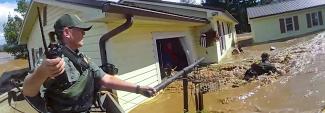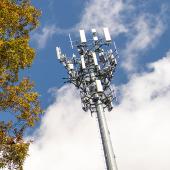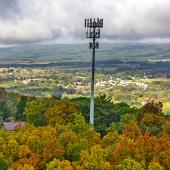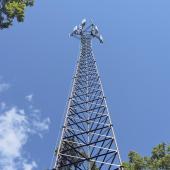EMS personnel must be able to rely on their communications — especially during worst-case scenarios.
I spoke with Assistant Chief Troy Harmison of Bondurant Emergency Services in Iowa about how a communication failure at a critical moment changed how his agency managed communications.
EMS’s worst nightmare
“We were dispatched out to every medic’s worst nightmare,” said Assistant Chief Harmison. “We had a call for a three-month-old who was not breathing, not responding, with CPR in progress.”
The EMS crew arrived on scene, continued CPR, and loaded the infant into the ambulance to rush to the hospital. Once inside the box, things went terribly wrong — the crew couldn’t communicate.
“Nothing's working. We can't transmit any 12 leads. We can’t call the hospital to let them know that we are inbound with CPR in progress. Every single piece of equipment that we are trying to utilize wasn’t connecting.”
In this dire situation, every member of the crew began handing over their personal cell phones to try calling the hospital. They cycled through three different carriers before someone’s phone connected.
“The communications failure at the absolute worst time possible was an egregious enough error that we said we’re done,” said Assistant Chief Harmison. “I started making phone calls that day, and we were completely switched over to FirstNet in less than two weeks.”
Benefits of always-on connectivity
Bondurant Emergency Services recently became an all-career department. They have 28 personnel, are staffed 24/7, run 3 advanced life support ambulances, and provide fire and rescue services.
The agency has used FirstNet for almost two years now. It connects their smartphones and tablets. They received a grant that supplied a new mobile data terminal and router for every apparatus, along with five years of data service.
This connectivity supports a range of EMS operations like reporting electronic patient records, transmitting 12-lead electrocardiogram readings to the hospital, and dispatching the closest unit using the GPS location of ambulances.
FirstNet technology is making a difference for Bondurant Emergency Services. According to Assistant Chief Harmison, “It has expanded our scope outside of the ambulance. We can pull our monitor out of the rig and still have that connection even in the living room of someone's house. We can transmit data and get it in front of a cardiologist that much faster.”
Boosting coverage where EMS works
To improve coverage indoors at the station, Bondurant Emergency Services uses Cell Booster Pros, devices that act as mini cell sites to bring FirstNet into buildings with coverage challenges. Cell Booster Pros are available — at no cost — for subscribing agencies to install inside the buildings where they work. This is made possible through an investment by the FirstNet Authority.
“We are in the process of building a new station and will probably be requesting an additional Cell Booster Pro because we're going from a 12,000-square-foot station to a 28,000-square-foot station,” said Assistant Chief Harmison.
The agency provides mutual aid to several surrounding communities, which requires them to drive through remote locations. They are considering high-power user equipment, or HPUE, which boosts signal power up to six times the normal strength at the edges of the network. “HPUE is something that I'm looking at possibly doing with my ambulances for those areas where there’s just not enough signal,” he said.
Reliable service for lifesaving mission
“Going over to FirstNet, we have had zero failures,” said Assistant Chief Harmison.
Reliable broadband service is important to emergency communications, especially as public safety technologies continue to evolve.
“I'm on my phone or utilizing my MDT [mobile data terminal] more than I am ever on the radio,” he said. “I’ve got my radio system on my FirstNet phone, so it's also my backup to my radio.”
EMS officials have a lifesaving mission and need reliable communication tools to support that mission. Assistant Chief Harmison’s advice to other EMS agencies is: “Don't wait until you run into the failure that we did. It’s much better to be proactive than reactive.”
To learn more about how FirstNet is helping public safety and the EMS community to leverage innovative public safety communications, sign up for the EMS Take with Jon Olson.















